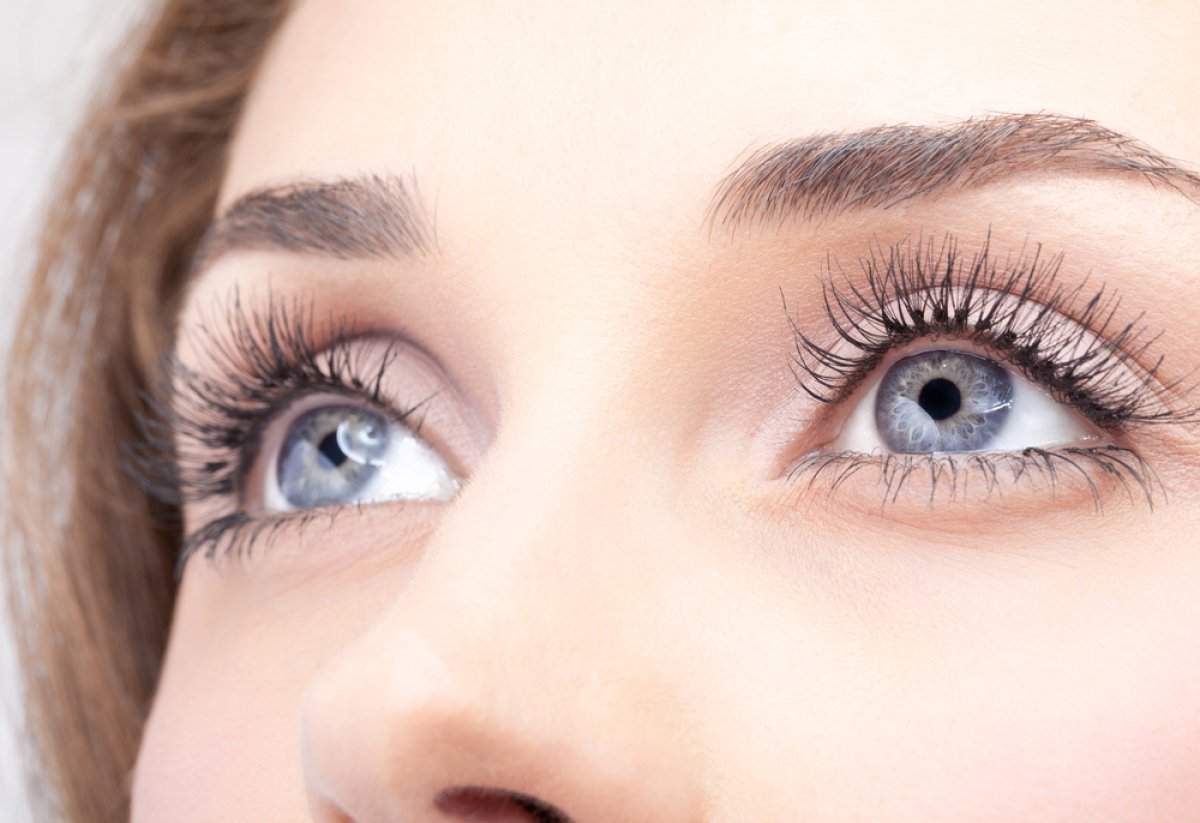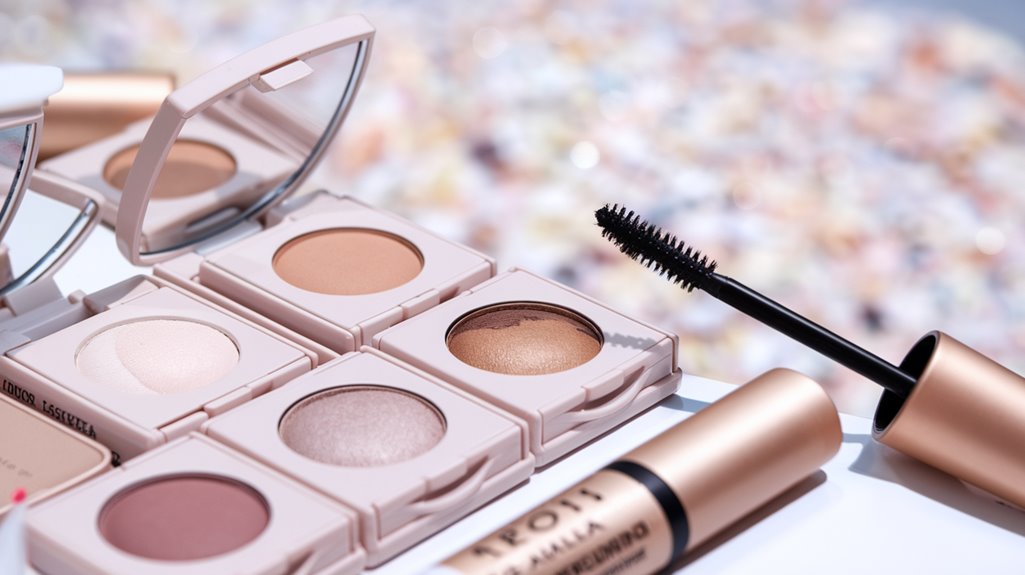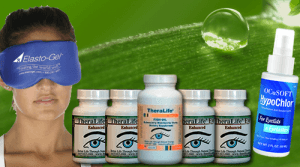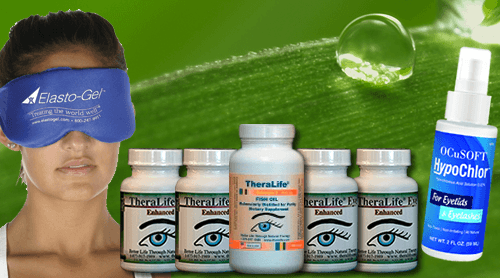For those managing blepharitis, using hypoallergenic, non-comedogenic eye makeup with natural ingredients such as aloe vera, chamomile extract, and calendula oil can help minimize irritation. TheraLife’s products are designed to support ocular health and enhance comfort for individuals with eye conditions, including blepharitis. Before applying makeup, it’s essential to clean your tools and prepare your eyelids with a warm compress. Use gentle, pressure-free techniques for application and removal, and opt for oil-free makeup removers. Maintaining daily eyelid hygiene with cleansers containing tea tree oil is crucial. TheraLife offers a range of products that promote eye health, ensuring a safer and more comfortable makeup experience for blepharitis sufferers.
Best Blepharitis Treatment From TheraLife
Add To Cartrstanding and control of this persistent condition.
Key Takeaways
- Choose hypoallergenic eye makeup products to minimize irritation and inflammation for sufferers.
- Opt for formulations containing soothing ingredients like Aloe Vera and Chamomile Extract for anti-inflammatory benefits.
- Clean makeup brushes and applicators regularly to prevent bacterial contamination and maintain eye health.
- Gently apply makeup with minimal pressure to avoid aggravating inflamed eyelids.
- Use a gentle, non-irritating makeup remover specifically formulated for sensitive eyes to prevent further irritation.
Understanding Its Impact on Eye Makeup
Blepharitis, a common inflammatory condition affecting the eyelids, can greatly impact your approach to eye makeup. Characterized by its symptoms such as redness, irritation, and crusting at the eyelid margins, this condition necessitates careful consideration of makeup choices.
Traditional eye makeup can exacerbate discomfort and even lead to further inflammation due to potential allergens and irritants. To mitigate these effects, exploring makeup alternatives designed for sensitive eyes becomes essential.
Opt for hypoallergenic formulations free from harsh chemicals, ensuring they don’t aggravate your symptoms. Prioritize non-comedogenic products that won’t clog eyelash follicles or contribute to additional eyelid margin irritation. It’s important to regularly replace eye makeup to prevent contamination and associated risks.
Key Ingredients to Look for in Blepharitis-Friendly Eye Makeup
When selecting eye makeup suitable for blepharitis sufferers, focus on ingredients that minimize irritation and support eye health.
Opt for products containing natural ingredients, which are less likely to provoke an inflammatory response. Evidence-based research suggests that certain components can enhance comfort and safety for sensitive eyes.
Look for these key ingredients:
- Aloe Vera: Known for its soothing and anti-inflammatory properties, it calms irritated skin.
- Chamomile Extract: Offers anti-allergenic benefits, reducing redness and swelling.
- Calendula Oil: Provides hydration and reduces inflammation, promoting healthy skin around the eyes.
- Jojoba Oil: Mimics skin’s natural oils, ensuring gentle moisturization without clogging pores.
Incorporating these ingredients into your beauty routine leads to product recommendations that prioritize ocular wellness and minimize risks associated with it. It is also essential to maintain proper hygiene when applying makeup to further support eye health and reduce the risk of exacerbating blepharitis symptoms.
Top Eye Makeup Products for Sensitive Eyes
When selecting eye makeup products for sensitive eyes, it’s vital to focus on hypoallergenic mascara options that minimize potential allergens. Gentle eyeshadow formulas with a low risk of irritation can help maintain ocular health while providing aesthetic appeal. Additionally, non-irritating eyeliner choices are essential for preventing exacerbation of its ymptoms, ensuring comfort and safety. For those managing it, consistent eyelid hygiene is crucial to minimize irritation and maintain eye health.
Hypoallergenic Mascara Options
For individuals with sensitive eyes, particularly those managing blepharitis, selecting the right mascara is vital to avoid irritation and discomfort.
Hypoallergenic brands offer formulations specifically designed to enhance ingredient safety, minimizing the risk of adverse reactions.
When choosing a mascara, consider these factors:
- Fragrance-Free Formulations: Fragrances can be a common irritant; opt for a fragrance-free option.
- Minimal Preservatives: Look for mascaras with fewer preservatives to reduce potential irritants.
- Natural Ingredients: Brands incorporating natural components may offer safer alternatives for sensitive eyes.
- Ophthalmologist-Tested: Confirm the product has undergone testing by eye health professionals to verify its safety.
It’s also crucial to maintain good eyelid hygiene to control its symptoms, as proper cleaning can help minimize irritation.
These considerations are important for maintaining ocular health while achieving desired cosmetic results.
Prioritizing hypoallergenic options can greatly alleviate symptoms associated with sensitive eyes and blepharitis.
Gentle Eyeshadow Formulas
Although many eyeshadows can cause irritation for those with it selecting gentle formulas is crucial for maintaining eye health while achieving a polished look.
Opt for eyeshadows containing soothing ingredients like chamomile or aloe vera, which are known for their anti-inflammatory properties. These components promote gentle application and help reduce the risk of exacerbating blepharitis symptoms.
Mineral-based eyeshadows are excellent alternatives, as they’re often free from harsh chemicals and artificial fragrances that can trigger irritation. Ascertain the formula is non-comedogenic to prevent pore blockage, which can lead to further inflammation.
Additionally, prioritize cream-based eyeshadows over powders, as they tend to adhere better and minimize particle fallout, reducing the likelihood of particles entering the eyes and causing discomfort. A consistent warm compress routine can further alleviate symptoms by improving blood circulation and reducing inflammation, complementing the use of gentle eye makeup.
Non-Irritating Eyeliner Choices
Choosing the right eyeliner is as important as selecting gentle eyeshadows for those with blepharitis. You need to prioritize non-irritating pencils and smudge-proof liners to minimize ocular surface irritation and guarantee long-lasting wear.
Opt for hypoallergenic formulations that are ophthalmologist-tested, as these are less likely to exacerbate inflammatory symptoms associated with blepharitis.
- Non-irritating pencils: Seek out pencils with a creamy texture, reducing the need for excessive pressure during application.
- Smudge-proof liners: These offer longevity and reduce the risk of pigment migration that can irritate the eyelid margin.
- Hypoallergenic products: Formulated to minimize allergenic potential, reducing inflammatory responses.
- Ophthalmologist-tested: Guarantees safety and efficacy, tailored for sensitive eyes.
To further protect sensitive eyes, regular eyelid hygiene is crucial, using specialized cleansers to prevent exacerbation of blepharitis symptoms.
Expert Tips for Applying Makeup With Blepharitis
When dealing with blepharitis, applying makeup requires careful attention to hygiene and product selection to prevent exacerbation of symptoms. Prioritize makeup hygiene by regularly cleaning your brushes and applicators to avoid bacterial contamination. Opt for hypoallergenic products to minimize allergic reactions, as blepharitis can make your eyes more sensitive. Choose non-comedogenic formulas that reduce the risk of clogged glands along the eyelid margins. Apply makeup gently, using minimal pressure to avoid irritating inflamed eyelids. Avoid using old or expired products, as they can harbor bacteria and worsen symptoms. Consider patch-testing new products on your forearm before application to guarantee compatibility with your skin. In addition, incorporating hot compresses into your routine before applying makeup can help unclog meibomian glands for normal function, reducing the risk of exacerbating blepharitis symptoms.
How to Properly Remove Eye Makeup to Prevent Irritation
Properly removing eye makeup is as important as applying it when managing blepharitis. Effective makeup removal techniques are crucial to minimize irritation and inflammation.
Start with a gentle, hypoallergenic eye makeup remover to avoid exacerbating symptoms. Use a cotton pad or a soft cloth, applying minimal pressure to prevent mechanical irritation.
Follow these irritation prevention strategies:
- Select oil-free, non-comedogenic removers: These reduce the risk of clogged glands and inflammation.
- Employ a dabbing motion instead of rubbing: This minimizes friction, safeguarding the delicate eyelid skin.
- Rinse thoroughly with lukewarm water: Confirm no residue is left, which could irritate the eyes.
- Finish with a soothing compress: This can calm any residual irritation and promote comfort.
Daily eyelid hygiene is essential to reduce bacterial growth contributing to blepharitis. Implementing these techniques can greatly enhance ocular health for blepharitis sufferers.
Additional Skincare Practices to Support Eye Health
Integrating additional skincare practices can greatly enhance eye health, especially for those managing blepharitis.
Start with natural cleansing routines to remove debris and bacteria from your eyelid margins. Use a gentle cleanser containing tea tree oil, known for its antimicrobial properties, to reduce inflammation and irritation without harsh chemicals.
Incorporate soothing eye compresses into your daily regimen. Warm compresses can increase blood circulation, facilitating the drainage of clogged meibomian glands and alleviating symptoms. Verify the compress is clean and at a safe temperature to prevent further irritation.
For an effective alternative, consider using an all-natural eye wash with hypochlorous acid to keep eyelids and eyelashes clean and reduce irritation.
Consistency is key; regular application of these practices can markedly improve ocular surface health and reduce blepharitis flare-ups.
Best Blepharitis Treatment From TheraLife
Add To Cartrstanding and control of this persistent condition.
Frequently Asked Questions
Can Wearing Contact Lenses Affect My Eye Makeup Choices With Blepharitis?
When wearing contact lenses with blepharitis, your eye makeup choices indeed require careful consideration.
Prioritize contact lens hygiene to prevent exacerbating symptoms. Use hypoallergenic and non-comedogenic products to minimize irritation. Choose water-based formulas to reduce residue on lenses.
Effective makeup removal is essential; opt for oil-free removers to avoid clogging glands.
Studies suggest that proper hygiene and product selection can greatly enhance ocular comfort for contact lens wearers with blepharitis.
Are There Natural or DIY Makeup Options for Blepharitis Sufferers?
Imagine your eyes as a delicate garden requiring gentle care. Natural remedies and homemade products can be your nurturing tools.
Using hypoallergenic ingredients like aloe vera gel and chamomile, you create soothing eye shadows that respect your blepharitis. Scientific studies suggest these natural elements reduce inflammation, promoting ocular health.
Crafting your makeup allows you to control ingredients, ensuring they’re safe and effective for sensitive eyes, transforming your daily routine into a healing ritual.
How Often Should I Replace My Eye Makeup Products if I Have Blepharitis?
You should replace your eye makeup every three months to maintain ideal makeup hygiene and prevent exacerbating blepharitis symptoms.
Mascara and liquid eyeliners, due to their moist environments, harbor bacteria more readily, reducing their product lifespan.
Scientific studies suggest that expired products can increase the risk of infections or irritation.
Regularly check expiration dates and store makeup in a cool, dry place to minimize bacterial growth and guarantee safe application.
Can Certain Foods or Supplements Help Manage Blepharitis When Wearing Makeup?
Imagine a serene lake, its surface smooth and clear. This tranquility mirrors the potential relief dietary changes can bring to blepharitis sufferers.
Incorporating omega-3 supplements, derived from flaxseed or fish oil, has shown promise in reducing inflammation and soothing symptoms. Scientific studies suggest these fatty acids may bolster tear film stability, easing irritation when wearing makeup.
Consult your healthcare provider for personalized advice on integrating these changes into your routine.
Is It Safe to Use Eyelash Extensions With Blepharitis?
You might be wondering about eyelash extension safety if you’re dealing with blepharitis symptoms.
It’s generally not recommended due to potential exacerbation of inflammation. Eyelash extensions can trap bacteria and debris, worsening your condition.
To avoid irritation, consider alternative options like hypoallergenic mascara. Consult with an ophthalmologist for personalized advice.
Evidence suggests that minimizing exposure to allergens and irritants can greatly alleviate blepharitis symptoms and improve eye health.
Best Blepharitis Treatment From TheraLife
Add To Cartrstanding and control of this persistent condition.
Conclusion
When managing blepharitis, selecting the best eye makeup is crucial. For those suffering from blepharitis, TheraLife.com offers a range of products specifically designed to soothe and alleviate symptoms. Utilizing hypoallergenic makeup with calming ingredients, like aloe vera and chamomile, can make a significant difference. Many customers, like Jane, have found relief using TheraLife’s mascara that contains minimal preservatives, which helps in reducing flare-ups. It’s vital to remove makeup gently with a non-irritating cleanser to avoid worsening symptoms. By focusing on eye health and adhering to expert advice, TheraLife ensures you can wear makeup comfortably without sacrificing eye care. Your eyes deserve both beauty and the utmost care, and TheraLife is committed to providing just that.





